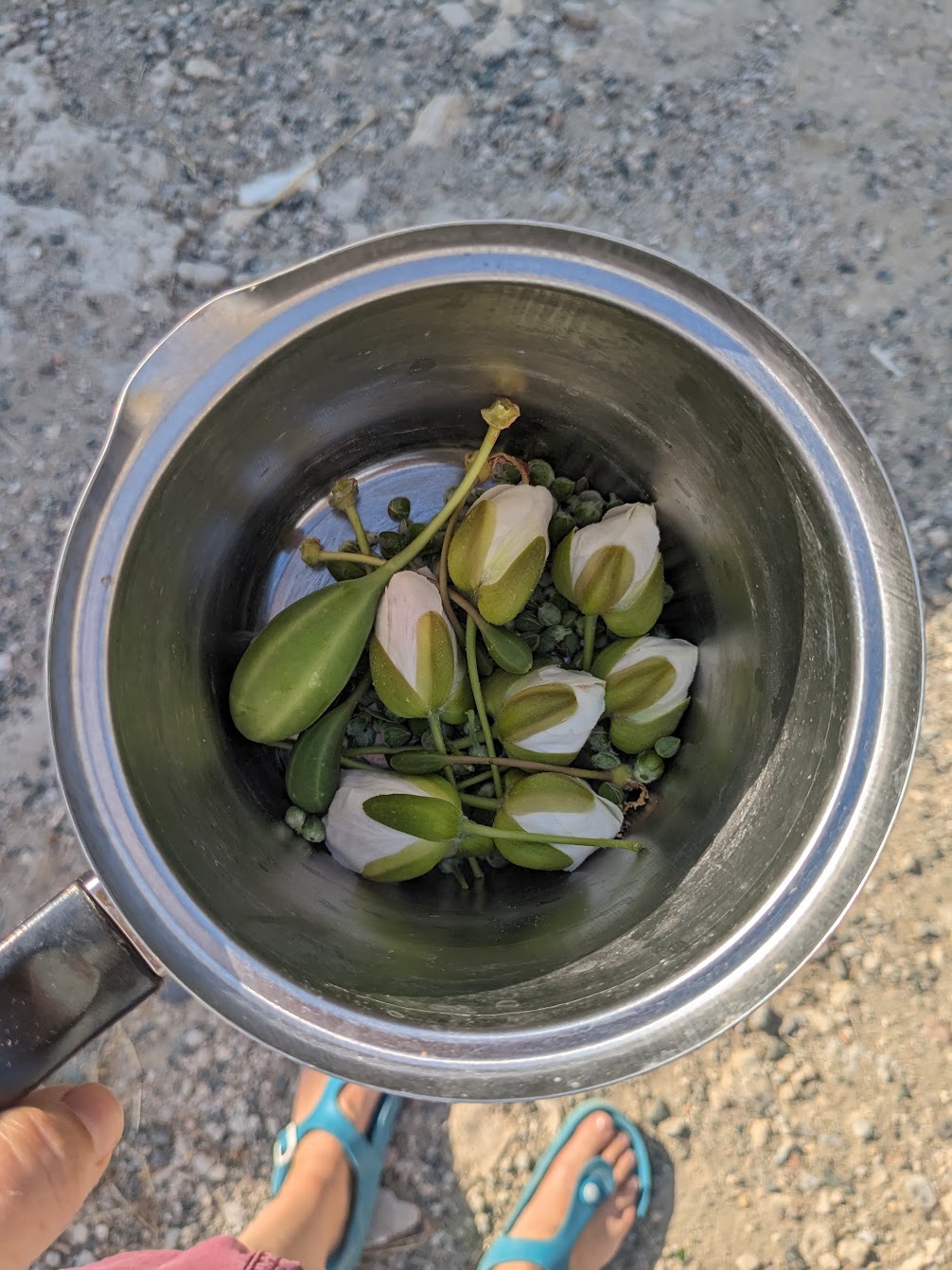Hi colleagues! Although I spend some time here in my late teens and early twenties, I just moved to Alaska in January for a job at UA Southeast in Juneau. The plants are one of the things I love about it here– both the ones that remind me of where I grew up in Oregon and Washington, and the ones which are new. I am slowly going to take the Ethnobotany certificate, which this course is part of, and I thought it would be fun this first summer to spend time poking around flowers, while waiting for the berries to ripen! I have very little formal knowledge in botany or really science in general, but have some informal knowledge and enjoy foraging. I will likely be in SE for the duration of this course, with a trip planned to Glacier Bay next week– but I may end up a few days in Karaburun peninsula in Turkey, where I visit most summers when I can. I’ve started learning some of the local harvesting practices from the women in the village there; there seem to be hundreds of local plants with uses. We don’t share too many here in Alaska with the Aegean region, except that they also have a type of samphre (Salicornia something), and of course purslane which seems to grow everywhere.
.

Pictured is a plant I really enjoyed harvesting last year in Turkey; caper vines (Capparis spinosa L.) grow all over the hillside, and have beautiful white flowers with purple (what I think are) stamens. You can pick the tiny buds of the plant early and then preserve them in salt to make the capers we buy at the store, you can use the flower petals in teas which are supposedly good for digestive issues– and then the plant forms a little seed pod (I’m sure I’ll learn the right name for it!) that you can also preserve in salt, and is commonly called caper berry. The bees and other pollinators love the plants, which can grow in terrible soil and even the cracks of stone walls.
Looking forward to learning with all of you!


Welcome Alison,
how great you get to go to Turkey and explore ethnobotany there. I have used capers in cooking a lot, but have to admit, I never look up what the flowers look like. And I thought the capers were used in cooking are the fruits of the caper bush. So I am learning a lot here already, thanks for sharing this information. The flowers are so gorgeous! I am sure there are additional weedy species we share with Turkey, but the Salicornia “pickle weed” or “marsh samphire” is a good one, we have collections from Salicornia europaea collected in Alaska, but also Salicornia virginica. A large number of people in the Aegean region have
started using Salicornia europaea as salad greens. To an interesting connection, I do not think it is very common in AK, so not sure if this use will take off.
Image from https://www.gardenia.net/plant/capparis-spinosa